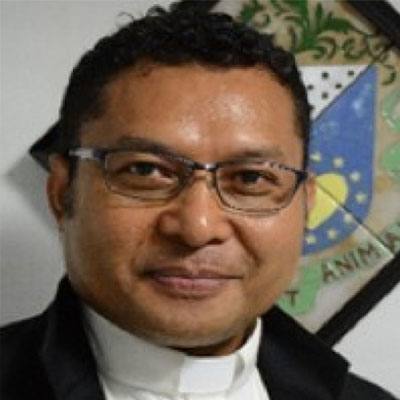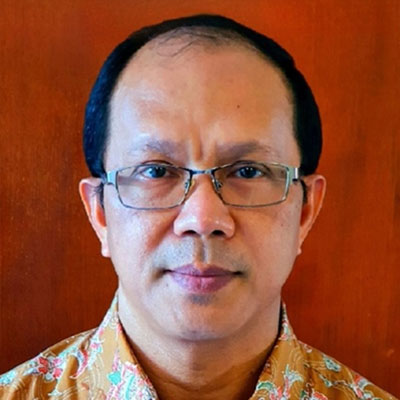 By Silvester Asa, cicm
By Silvester Asa, cicmGeneral Councilor
I remember distinctly that moment when, on a visit to my mother’s hometown in Atapupu on the northern coast of Timor Island, some of my High School classmates, a group called “Smansa86”, [1] presented me with a Timorese sandalwood tree which was nicely wrapped in a plastic bag.
I was so delighted with this gift. For one thing, Timorese sandalwood was so precious that, in olden times, the Chinese merchants who traveled to Timor intermarried with daughters of native Timorese rulers and embraced the matriarchal system prevalent in Timor so that they could gain easy access to the sandalwood trade.[2] Subsequently, the Europeans, notably the Portuguese and the Dutch, also showed great interest in sandalwood trade that lured them to Timor, marking the beginning of decades of Western colonization of the Timorese people. Sadly, at present, due to overharvesting, one can hardly find a sandalwood tree in the land where it used to grow.[3]
As planned, I planted this sandalwood tree near the tombs of my maternal grandparents. I took some pictures of it and sent them to my High School classmates. Upon seeing the picture, a classmate who works at the Forestry Department asked me what had happened to the small plants that grew around the young sandalwood tree in the plastic bag they had given me. Because I thought they were wild plants that would hinder the growth of the sandalwood tree, so I decided to pluck them out. Little did I know that those plants were grown together with the sandalwood tree to support its growth.
I could not help but recall this particularly embarrassing experience when I read some articles of Robin Wall Kimmerer. I also wonder if my action was a little better than those of the settlers who arrived in North America for the first time. Ironically, even though they ate from the fruits of the garden produced by the Native Americans, the settlers belittled the Native American way of farming. Obviously, for those settlers, a garden was “straight rows of single species, not a three-dimensional sprawl of abundance”, [4] a form of agriculture the native people have practiced from the time immemorial.
Understandably, each culture has different views and practices in farming. What is quite disturbing is the settlers' attitude when facing a way of farming that differs from their own. While the native people “speak of this gardening style as the Three Sisters,”[5] where corn, beans and squash grow together, just like asters and goldenrod can grow together in perfect harmony and in turn evoke not only one’s sense of beauty but also nourishes human beings’ bodily needs, [6] the settlers looked at such farming condescendingly.
Roger Schroeder, SVD, described a missionary endeavor as “entering into someone else’s garden”.[7] Indeed, a missionary may be likened to someone entering into someone else’s garden. What is required of them is respect, prudence and humility. Lest they will be busy chasing their own “cultural shadows”.[8] Worse still, they will uproot some of those plants that have grown in the garden long before their arrival, thinking that they are weeds. As it has happened in the past, with all their noble intentions to spread the Gospel, some Christians considered the indigenous peoples inferior and advocated conquest rather than witnessing the Gospel values, which unfortunately resulted in the annihilation of not only a culture but also a people.[9]
Indeed, the experience I had in Timor and Kimmerer’s work serve as a stark reminder of the danger of acting recklessly in the field of the Lord. They can also serve as an invitation for us to “seek the thread that connects the world, to join instead of divide”. [10] As religious CICM missionaries, we are “sent to the nations to announce the Good News, wherever our missionary presence is most needed, especially where the Gospel is not known or lived”.[11] Our going forth, moving away from our own cultures to be religious missionaries in a culture different from our own does not detach us from our own cultures, for we will always carry with us our own cultural shadows wherever we go, as Peter Koh and Jan Swyngedouw have so poignantly noted.[12] Hopefully, the awareness of our own shadows enriches us in our encounter with the culture of the people to whom we are sent.
Indeed, for all my encounters with those who are “culturally holy other”, [13] I will always remain a Timorese, born in a land once famous for its sandalwood. But as a religious CICM missionary, I can dream of and work for a garden where the sandalwood tree grows amidst asters and goldenrod and provides support for the three sisters: corn, beans, and pumpkins. Such a garden would offer a beautiful sight of purple and yellow from the asters and goldenrod, bodily nourishment from the three sisters, healing and comfort to the broken soul from the therapeutically aromatic scent of the sandalwood. ■
[1] Smansa is an abbreviation of “SMA Satu.” SMA is Senior High School in Indonesia. “86” refers to the year we entered High School in 1986 (Batch 1986).
[2] Agni Malagina and Syefri Luwis. Koin Kuno Spanyol dan Kisah Rempah Wangi di Pulau Timor (Antique Spanish Coins and the Tale of Timorese Scented Spices) on National Geographic Indonesia, posted on February 8, 2019. Accessed on January 1, 2021. https://nationalgeographic.grid.id/read/131623619/koin-kuno-spanyol-dan-kisah-rempah-wangi-cendana-di-pulau-timor?page=2
[3] Sigiranus Marutho Bere. Pohon Cendana di Timor Nyaris Punah, (Timorese sandalwood, at the Brink of Extinction) posted on April 3, 2012, accessed on January 1, 2021. https://regional.kompas.com/read/2012/04/03/16514511/Pohon.Cendana.di.Timor.Nyaris.Punah
[4] Robin Wall Kimmerer. Braiding Sweetgrass: Indigenous Wisdom, Scientific Knowledge, and the Teachings of Plants. The Three Sisters (Minneapolis: Milkweed Editions, 2013), 129.
[5] Kimmerer. Braiding, 131.
[6] Robin Wall Kimmerer. Braiding Sweetgrass: Indigenous Wisdom, Scientific Knowledge, and the Teachings of Plants. Asters and Goldenrod (Minneapolis: Milkweed Editions, 2013), 46.
[7] Stephen B. Bevans and Roger P. Schroeder. Prophetic Dialogue: Reflections on Christian Mission Today (Maryknoll, New York: Orbis Books, 2011), 33-4
[8] Peter Koh Joo-Kheng, CICM and Jan Swyngedouw, CICM, Our Cultural Shadows: Letters From and To A Young Missionary (Quezon City: Claretian Publications, 1998), xii.
[9] Stephen B. Bevans and Roger P. Schroeder. Constant in Context: A Theology of Mission for Today (New York: Orbis Books, 2004), 176.
[10] Kimmerer. Braiding Sweetgrass. 42.
[11] Congregation of the Immaculate Heart of Mary. Constitutions and General Directory. Article 2. (Roma, 1988), 14.
[12] Koh, Our Cultural Shadows, xii.
[13] In his public lecture at Catholic Theological Union, CTU Chicago on “Interculturality and Leadership in Consecrated Life,” Antonio M. Pernia, SVD., spoke of “culturally other.” Thus, “Culturally Holy Other” is an addition from me based on Pernia’s lecture. Video Lecture at CTU, accessed on January 6, 2021. https://learn.ctu.edu/antonio-pernia-monday/








